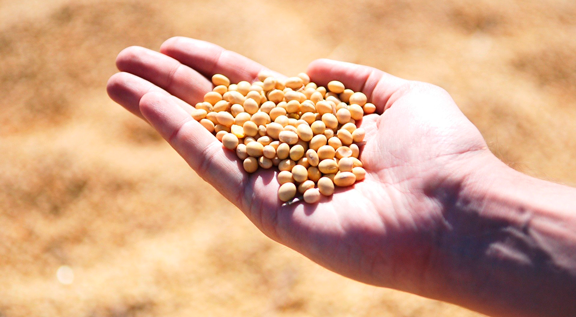
Image: Pixabay
A Brazilian soybean harvest with higher volumes expected in early 2022 has also shortened the U.S. export window to China, the world's biggest buyer of soybeans.
China's total imports of North American soybeans for the marketing year that began Sept. 1 could fall by at least 20% to less than 30 million tons, according to analysts and major importers.
US farmers have just harvested their second largest soybean crop in history and typically export around 45-50% of annual production.
More than half of these sales tend to go to China, which in turn does about 70% of its US soybean business during the September to December post-harvest window.
But this year, the fallout from Hurricane Ida — which disrupted crop loading at major U.S. ports for several days in September — resulted in an 81% drop in shipments to China that month compared to the previous year, according to data from the Department of Agriculture. of US Agriculture.
Additionally, the main drivers of China's soybean demand — crush margins and hog production — hit a weak point during the peak U.S. harvest window, reducing China's appetite for U.S. supplies.
{module Form RD}
US shipments rose sharply in October to more than 10 million tonnes, according to Refinitiv data, but now face the prospect of an earlier than normal start to the 2022 export season from Brazil, the world's biggest producer. of soy.
“The US export crop (soybeans) is off to a poor start this year. Crush margins were low and demand was not good at that time,” said Bai Jie, an analyst at Cofco.
“Then there was the impact of Hurricane Ida. And part of the US market was squeezed by Brazilian grains,” said Bai.
DISADVANTAGE
U.S. soybean shipments to China in 2020-21 were the strongest since the 2016-17 season, thanks in part to a delayed start to Brazil's 2021 export season that helped boost U.S. sales.
“American grain will not have this opportunity in the coming months, as Brazilian grain planting is rapid this year, which means there will be a large shipment of grain to China in the first quarter of 2022,” said Zou Honglin, an analyst at agriculture division of Mysteel, a China-based commodities consultancy.
US soybeans have also faced price headwinds, with export offers trading very close to those from Brazil, where shipping costs to China are lower.
Additionally, Brazilian soybeans offer better crush margins for Chinese soybean processors, thanks to the higher protein levels in Brazilian soybeans on average.
Margins for U.S. soybeans shipped from the Pacific Northwest for February delivery are about 500 yuan ($78.49) per ton, compared with 684 yuan for Brazilian beans, according to Mysteel.
“Brazilian grains are a little cheaper and the price reigns,” said an Asian trader with a major trading company.
“WINDOW IS CLOSING”
Chinese soybean importers have nearly completed December purchases and are now meeting January and February needs as Brazil's export season ramps up, according to a U.S. exporter.
January soybean shipments from the Gulf Coast were offered around $500 per ton FOB late last month, with an additional $78 or $80 per ton for freight to China. Brazilian soybeans are around $520 per ton FOB, with freight around $60 per ton, he said.
“It’s been a little disappointing from a U.S. perspective. Brazil is entering our export window a little more every year”, stated the exporter. “Our window is closing.”
China's soybean arrivals in November-December will be mainly US shipments, but Brazilian shipments are expected to increase sharply during January-March to more than 6 million tonnes, according to Mysteel's Zou.
This would represent a more than four-fold increase from 1.35 million tonnes during the first quarter of 2021.
With China expected to account for nearly 60% of all soybean imports this season, US exporters will be unable to find a single major buyer to replace it. Europe, Mexico, Argentina, Egypt and Thailand are the next five biggest importers, according to the USDA, but together they buy just a third of the total from China.
Clipping: Notícias Agrícolas | Source: Reuters












